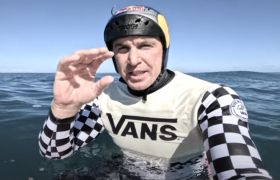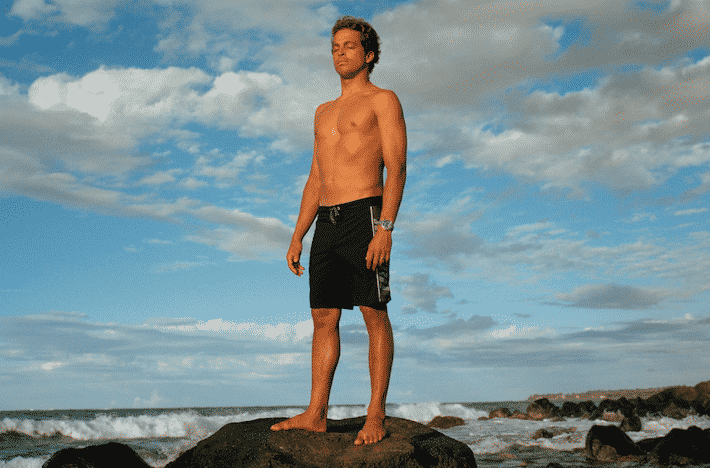Wunderbar.
While there has been much talk of the mythical 100-foot wave over the years, an HBO series even named The 100-Foot Wave, none has ever been surfed, or at least none surfed and documented. Measuring waves, you see, is a difficult business. One man’s trough is another man’s… something that rhymes with trough but isn’t trough.
Tough.
But nothing is too tough for our World Surf League and, with the help of the Guinness Book of World Records and science, it was just revealed that German ace, and one-time Christian Fletcher punching bag, Christian Steudtner now officially holds the title of “biggest wave ever ridden,” a whopping 86-foot Nazare bomb.
Though how, exactly, was it measured?
A new The Washington Post expose reveals:
The standard (Adam) Fincham and his colleagues from Scripps Institution of Oceanography at the University of California San Diego and the Kelly Slater Wave Company settled on this year was Steudtner’s lower leg, from his heel to his kneecap.
“That distance does not change since you can’t bend your lower leg,” Fincham said.
The team asked Steudtner to measure that length, which effectively gave them a ruler for the image of the surfer’s ride.
The experts must study the image closely, accounting for distortions that might misrepresent the wave’s size. Different angles and cameras lenses could muddle the process.
To account for how to correct the images, Fincham traveled to Nazaré and stood at the locations where photos and videos of Steudtner’s ride were captured, calculating the camera angles and the distance of the camera to the wave face. He also interviewed the two photographers whose imagery was used to analyze the wave, learning more about the equipment they used and how they leveled their cameras.
With this information in hand, the analysis team used 3D modeling software to geometrically correct the photos and convert pixels to inches. Using the lower leg standard, they could begin to measure the wave from trough to crest.
You must recall Adam Fincham as the inventor of Kelly Slater’s wave pool technology.
Science.
Something we can all agree upon.
No?







